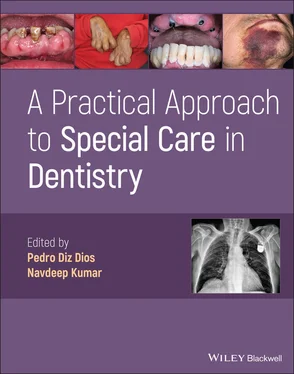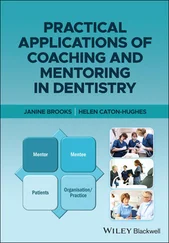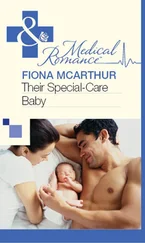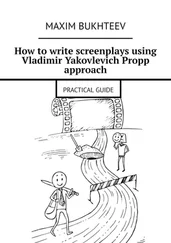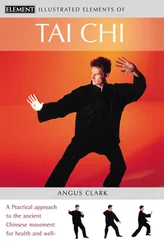A Practical Approach to Special Care in Dentistry
Здесь есть возможность читать онлайн «A Practical Approach to Special Care in Dentistry» — ознакомительный отрывок электронной книги совершенно бесплатно, а после прочтения отрывка купить полную версию. В некоторых случаях можно слушать аудио, скачать через торрент в формате fb2 и присутствует краткое содержание. Жанр: unrecognised, на английском языке. Описание произведения, (предисловие) а так же отзывы посетителей доступны на портале библиотеки ЛибКат.
- Название:A Practical Approach to Special Care in Dentistry
- Автор:
- Жанр:
- Год:неизвестен
- ISBN:нет данных
- Рейтинг книги:3 / 5. Голосов: 1
-
Избранное:Добавить в избранное
- Отзывы:
-
Ваша оценка:
- 60
- 1
- 2
- 3
- 4
- 5
A Practical Approach to Special Care in Dentistry: краткое содержание, описание и аннотация
Предлагаем к чтению аннотацию, описание, краткое содержание или предисловие (зависит от того, что написал сам автор книги «A Practical Approach to Special Care in Dentistry»). Если вы не нашли необходимую информацию о книге — напишите в комментариях, мы постараемся отыскать её.
Learn to treat dental patients with disabilities or who are medically compromised A Practical Approach to Special Care in Dentistry
A Practical Approach to Special Care in Dentistry
A Practical Approach to Special Care in Dentistry — читать онлайн ознакомительный отрывок
Ниже представлен текст книги, разбитый по страницам. Система сохранения места последней прочитанной страницы, позволяет с удобством читать онлайн бесплатно книгу «A Practical Approach to Special Care in Dentistry», без необходимости каждый раз заново искать на чём Вы остановились. Поставьте закладку, и сможете в любой момент перейти на страницу, на которой закончили чтение.
Интервал:
Закладка:
Aetiopathogenesis
In industrialised countries, the main causes of visual deficit among adults are age‐related macular degeneration, glaucoma and diabetic retinopathy; paediatric blindness is mainly due to retinopathy of prematurity
In developing countries, the most common causes are cataracts and trachoma; in children, congenital cataracts appear frequently in the context of a polymalformative syndrome (a recognisable pattern of congenital anomalies that are known or thought to be causally related)
Clinical Presentation
The clinical manifestations depend on the location of the injury causing the visual impairment (e.g. optic nerve injuries are usually irreversible) and its aetiology (e.g. congenital cataracts can be associated with epilepsy)
The most suggestive symptoms of visual deficit include the following:Visual adaptation problems in dark settingsDifficulty focusing on near or distant objectsExcessive light sensitivityEye redness or inflammationSudden eye painDouble visionSudden vision loss in one eyeOnset of a dark spot in the centre of the visual fieldLoss of peripheral visionSudden blurred vision
Diagnosis
Visual acuity tests include the Snellen test (ability to perceive the forms of objects and to distinguish their details)
Visual field and peripheral vision tests (ability to perceive objects placed outside the central vision area)
Ophthalmoscopy/fundoscopy (retinal examination)
Other: e.g. tonometry, slit‐lamp, photometers
Management
Cataract surgery
Prescription glasses for correcting refractive errors
Drugs for age‐related macular degeneration
Support measures include braille (a tactile reading and writing system), electronic methods for identifying colour and, in extreme cases, guide dogs ( Figures 3.1.4and 3.1.5)
There is speculation as to the future possibility of curing blindness with stem cells
Prognosis
Life expectancy can be affected by the coexistence of an underlying disease (e.g. polymalformative syndromes, diabetes) Figure 3.1.4 Braille is a useful communication tool mainly for complete blindness patients. Figure 3.1.5 When the blind patient uses a guide dog, avoid interfering with the dog.
A World/Transcultural View
About 75% of the population with visual deficits live in the poorest regions of Asia and Africa
Among the lowest income countries, the proportion of children with blindness but caries free ranges from 53.2% in Sudan to 1.5% in India; paradoxically, studies in India have confirmed the efficacy of various preventive programmes based on promoting adapted oral hygiene techniques
Recommended Reading
1 GBD 2019 Blindness and Vision Impairment Collaborators; Vision Loss Expert Group of the Global Burden of Disease Study (2020). Causes of blindness and vision impairment in 2020 and trends over 30 years, and prevalence of avoidable blindness in relation to VISION 2020: the right to sight: an analysis for the global burden of disease study. Lancet Glob. Health: S2214‐109X(20)30489‐7.
2 Hidaka, R., Furuya, J., Suzuki, H. et al. (2020). Survey on the oral health status of community‐dwelling older people with visual impairment. Spec. Care Dentist. 40: 192–197.
3 Jain, A., Gupta, J., Aggarwal, V., and Goyal, C. (2013). To evaluate the comparative status of oral health practices, oral hygiene and periodontal status amongst visually impaired and sighted students. Spec. Care Dentist. 33: 78–84.
4 Lee, S.Y. and Mesfin, F.B. (2020). Blindness. www.statpearls.com/
5 Schembri, A. and Fiske, J. (2001). The implications of visual impairment in an elderly population in recognizing oral disease and maintaining oral health. Spec. Care Dentist. 21: 222–226.
6 Shivanna, V., Jain, Y., Valluri, R. et al. (2019). Estimation of dental anxiety levels before and after dental visit in children with visual impairment using modified dental anxiety scale in Braille text. J. Int. Soc. Prev. Community Dent. 10: 76–84.
7 Tiwari, B.S., Ankola, A.V., Jalihal, S. et al. (2019). Effectiveness of different oral health education interventions in visually impaired school children. Spec. Care Dentist. 39: 97–107.
8 Watson, E.K., Moles, D.R., Kumar, N., and Porter, S.R. (2010). The oral health status of adults with a visual impairment, their dental care and oral health information needs. Br. Dent. J. 208: E15.
3.2 Auditory Deficit
Section I: Clinical Scenario and Dental Considerations
Clinical Scenario
A 6‐year‐old girl presents to your dental clinic with her foster mother who requests management of the patient's dental crowding.
Medical History
Foetal alcohol syndrome (her biological mother had a drug and alcohol addiction, and is deceased)
Bilateral mixed hypoacusis/hearing impairment due to sensorineural damage and eustachian tube dysfunction; auditory thresholds of 90 dB in the right ear and 80 dB in the left ear; has worn hearing aids from the age of 8 months but finds these difficult to tolerate
Pigmentary retinopathy and optic nerve hypoplasia resulting in partial visual impairment
Osteopenia in the lumbar vertebrae
Overall growth retardation, with mild intellectual deficit
Behavioural issues, with occasional aggressive episodes
Medications
Risperidone
Vitamin D3
Dental History
No previous dental visits
No chewing or swallowing problems
Patient brushes 3 times a day, supervised by her foster mother
Social History
Lives with a foster family
Lack of spoken language but communicates through sign language
Schooled since the age of 4 years (has a specialised support teacher for deaf‐blind children)
Oral Examination
Good oral hygiene
Bimaxillary compression resulting in a narrow, pointed/ogival arched palate ( Figure 3.2.1)
Posterior cross‐bite; edge‐to‐edge occlusion of anterior teeth
Anterior tooth crowding, both maxillary and mandibular
Delayed tooth eruption
No caries detected
Radiological Examination
An orthopantomogram was performed (poor quality due to lack of patient co‐operation)
Demonstrated delay in dental development and tooth eruption of approximately 18–24 months
Agenesis of #34, #35, #44 and #45
Structured Learning
1 Why is the hypoacusis/loss of hearing in this patient particularly significant?The patient has mixed bilateral deafness (which implies sensorineural impairment)The auditory threshold is very low in one ear and severe in the otherThe onset of the deafness was prelingual
2 What other factors impact on the ability to communicate with this patient?Does not tolerate her hearing aids (often removes them)Additional visual deficit which will impact on her ability to: Figure 3.2.1 Bimaxillary compression resulting in a narrow, pointed/ogival arched palate.Engage with other communication management techniques such as pictograms and ‘tell–show–do’ ( Figure 3.2.2)Ability to lip read or use sign language effectivelyNo prior dental experience so unable to relate to surroundings, including the feel and smells associated with a dental officeLearning disability Figure 3.2.2 Sign language can be used to enhance communication.Behavioural issues which may be worsened by heightened anxiety
3 What factors are considered important in assessing the risk of managing this patient?SocialLack of spoken languageLimited co‐operationPotentially aggressive behaviourMedicalAuditory deficitVisual deficitIntellectual deficitDentalNo previous experience of dental visits and hence limited co‐operation; will require acclimatisationCertain behavioural control techniques are not applicable (e.g. tone of voice)Delayed dental development, malocclusion, tooth agenesis and high arched palate in relation to the foetal alcohol syndrome
Читать дальшеИнтервал:
Закладка:
Похожие книги на «A Practical Approach to Special Care in Dentistry»
Представляем Вашему вниманию похожие книги на «A Practical Approach to Special Care in Dentistry» списком для выбора. Мы отобрали схожую по названию и смыслу литературу в надежде предоставить читателям больше вариантов отыскать новые, интересные, ещё непрочитанные произведения.
Обсуждение, отзывы о книге «A Practical Approach to Special Care in Dentistry» и просто собственные мнения читателей. Оставьте ваши комментарии, напишите, что Вы думаете о произведении, его смысле или главных героях. Укажите что конкретно понравилось, а что нет, и почему Вы так считаете.
